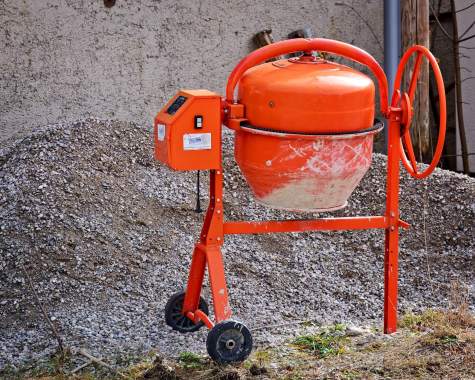First permanent use of low carbon concrete mix trialled on Northumberland flood alleviation scheme

This post was originally published on this site

Bam, Arup and Tarmac have worked with the Environment Agency to trial the use of two low carbon concrete mixes for permanent works at the Hexham flood alleviation Scheme in Northumberland.
The trials, delivered by the Environment Agency’s Collaborative Delivery Framework Hub A – a cooperation between the agency, Arup and Bam Nuttall to deliver flood defence schemes across North East England – have been described as successful, with low-carbon concrete used across three panels totalling 27m of the £6.5M Hexham flood defences.
Hexham suffered damage from flooding during Storm Desmond in 2015, which led to the Hexham flood alleviation scheme, designed to help to protect up to 90 properties in one of the town’s most important commercial areas. The historic market town’s flood defence scheme, entailing 600m of flood walls and grass embankments, is expected to complete this summer.
The trials at Hexham involved the first use in permanent works of a new Portland Limestone Ternary mix developed by Tarmac that has delivered carbon savings of 64% compared to traditional cement-based concrete. Also tested was an Alkali Activated Cementitious Material (AACM) which reduced carbon emissions by 70%, per cubic metre of concrete, across the section of the wall where low carbon concrete was used.
The site will be monitored to demonstrate the long-term durability and suitability of the concrete mixes, with data collected providing insights into the future use of low-carbon solutions.
The trialling project is part of a wider plan to reduce the carbon footprint of the construction of flood defences, while retaining their strength and resilience. It is hoped that the trials to find new ultra-low-carbon concrete alternatives, will enable future Environment Agency flood defences across the North East to be built more sustainably with lower embodied carbon, and will support the delivery of new sustainable concrete products, to the wider construction industry.
Traditional concrete production contributes around 7% of global carbon emissions due to a combination of the chemical reactions and the energy-intensive methods that go into the production of cement, the key binding element in concrete. Advances in the UK concrete industry mean that concrete currently accounts for around 1.5% of UK carbon emissions.
Bam Nutall area carbon and sustainability lead Ruth Young said: “As the Environment Agency’s construction partner in the North East, we are carefully considering how we can limit the environmental impact of the flood defence work we deliver without compromising the strength and resilience of these structures. We identified Tarmac’s new low-carbon concrete mixes as innovative products, which have the potential to reduce our overall carbon impact across the framework. We are working closely with the Environment Agency, Arup and Tarmac, to ensure the materials can be approved for use and look forward to seeing these being used on more civil engineering schemes in the future.”
Arup associate Donald Daly added: “A successful trial will give us the ability to deliver low carbon solutions for the vital flood defence work which will protect communities not just in Hexham, but across the North East. We can’t afford to compromise on flood protection, so finding concretes which significantly reduce carbon emissions while maintaining robust defences represents an incredibly important milestone.”
Environment Agency operations manager Leila Huntington described the trial as “a fantastic example of how we can work with our partners to continue to build flood defences to better protect communities from flooding, while also focusing on sustainability, the environment and reducing our carbon emissions”.
Tarmac head of commercial engineering solutions Robert Gossling said: “This flood defence project in Hexham highlights the clear sustainability benefits which can be achieved when clients and contractors work in partnership, in this case engaging to help understand the benefits and reduce the concrete carbon footprint of the Environment Agency. The testing comparisons will help build confidence in these new products.”
Like what you’ve read? To receive New Civil Engineer’s daily and weekly newsletters click here.




Responses